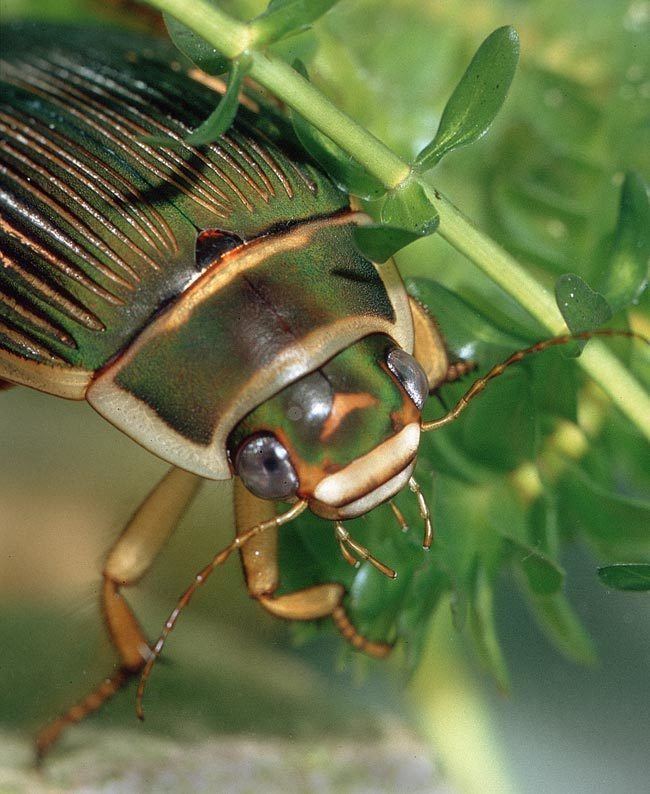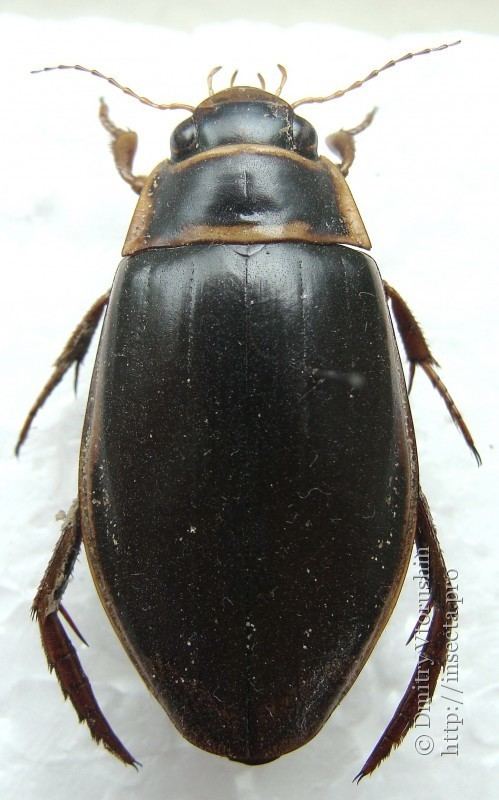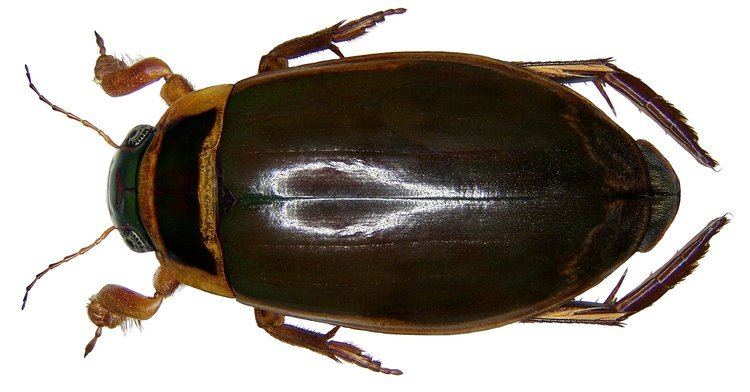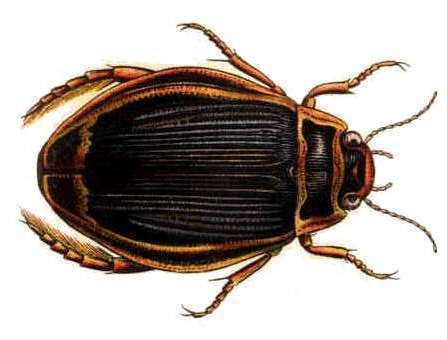Tribe Dytiscini Rank Genus | Scientific name Dytiscus Higher classification Dytiscidae Order Beetle | |
 | ||
Lower classifications Great diving beetle, Dytiscus latissimus | ||
Ditisco divora insetto stecco morto dytiscus devours died stick insect
Dytiscus (great diver) (based on Greek δυτικός, "able to dive") is a Holarctic genus of predaceous diving beetles that usually live in wetlands and ponds. There are 26 species in this genus distributed in Europe, Asia, North Africa and North and Central America. They are predators that can reduce mosquito larvae.
Contents
- Ditisco divora insetto stecco morto dytiscus devours died stick insect
- Small diving beetle dytiscidae dytiscus
- Life history
- Parasitoids
- Species
- References

Dytiscus species are large water beetles with a robust, rounded shape and are usually around two inches long. The tarsi of the males are modified into suckers which are used to grip the female in mating. Females are usually larger than the males and come in two forms, with grooved (sulcate) or smooth elytra. Males only ever have smooth elytra. The adults of most species can fly.

Small diving beetle dytiscidae dytiscus
Life history

Adult beetles and their larvae are aquatic but the pupae spend their life in the ground. Females lay eggs inside the tissue of aquatic plants such as reeds. The eggs hatch in about three weeks.

The larvae (known as "water tigers") are elongate with a round and flat head and strong mandibles. They are predatory and their mandible have grooves on their inner edge through which they are able to suck the body fluids of their prey. The larvae take air from the surface of the water using hairs at the end of their abdomen. These lead to spiracles into which the air is taken.

Once the larvae grow to some size, they move to soil at the edge of water and burrow into a cell and pupate.

The adults breathe by going to the surface and upending. They collect air under their elytra and are able to breathe this collected air using spiracles hidden under the elytra.
In Dytiscus marginalis and other species the tarsus of the forelegs is modified in males to form a circular sucker. A reduced sucker is also seen in the midleg of the male.
Parasitoids
Eggs of Dytiscus are sometimes parasitized by wasps of the families Eulophidae, Mymaridae and other Chalcidoidea.
Species
Dysticus contains the following species:
